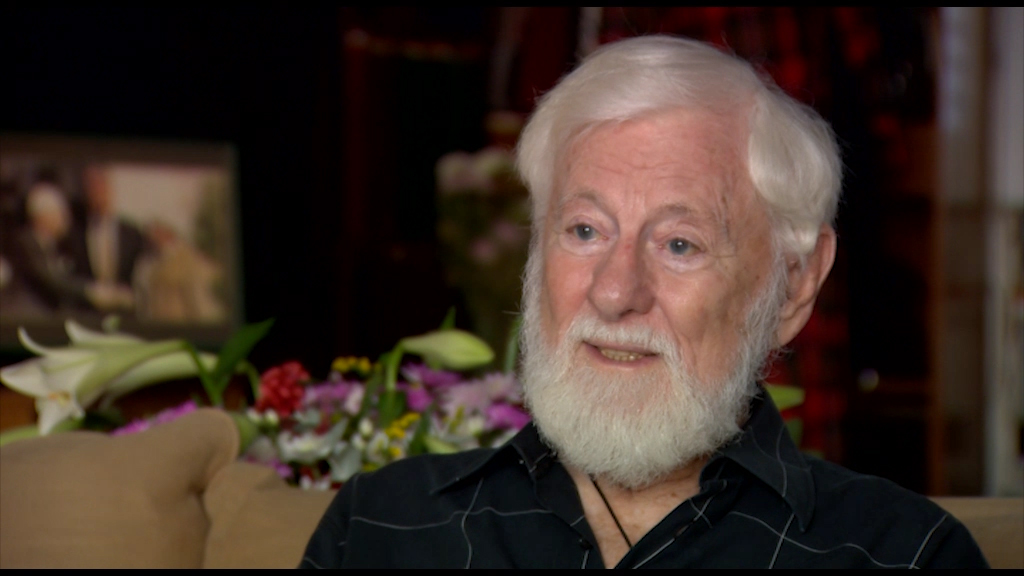Begin came to power. To everyone's surprise he made peace with Egypt and was seen as a man of peace. The trouble was that no one understood Begin except me. I say this only half in jest. I grew up in the Revisionist movement and had been a member of the Irgun so I knew their worldview. The worldview of the Revisionists and of the Freedom Movement and the Likud is centred entirely on the map which appears on the Irgun symbol and appeared on the masthead of the newspaper Hamashkif [The Observer] which belonged to the Revisionist party and to the Freedom Movement. This is the map of the British Mandate of Eretz Israel on both sides of the Jordan. That was the land which the movement called Israel, and it did not include any other country − not Lebanon nor Syria nor the Golan Heights nor Egypt nor Sinai − only Transjordan and the Land of Israel 'from the river to the sea'. Therefore, for Begin to make peace with Egypt and also with Syria, for if he had continued to be in power he would certainly have made peace with Syria, without any doubt… He had no ideological problem with this. The ideological problem was with the Land of Israel. Thus he made peace with Egypt. From his point of view, it was an act of war not an act of peace, and he removed Egypt from the fateful struggle for the Land of Israel, which was the only struggle in which he was interested. Therefore he was not interested in what was happening in Lebanon or Syria. It was the Labour movement that kept its eye on Lebanon, or on part of Lebanon. After World War I, when the little Zionist movement presented its demands at the peace conference which followed the war, they presented a map of the country, or the Zionist homeland that they wanted, and it stretched from Al Arish to the Litani River in Lebanon, which is a good few dozen kilometers from Rosh Hanikra. The Freedom Movement had a completely different map: mandatory Eretz Israel on both sides of the Jordan. For that reason they made peace easily, removing it from the frontline of the war. Had there been time, he would have done the same thing with Syria. Therefore, it was relatively easy to make peace with Egypt, with the evacuation of the entire area up to the last millimeter, with the destruction of Yamit and all that entailed.
בגין הגיע לשלטון. להפתעת כולם הוא עשה שלום עם מצרים והצטייר כאיש שלום. הצרה היא שחוץ ממני איש לא הבין את בגין. אני אומר את זה חצי בצחוק, לא לגמרי. אני גדלתי בתנועה הרוויזיוניסטית, הייתי חבר באצ"ל ואני הכרתי את השקפת העולם שלהם. השקפת העולם של הרוויזיוניסטים ושל "תנועת החרות" ושל "הליכוד" היא מרוכזת כל כולה במפה שהופיעה בסמל של אצ"ל, הופיעה בראש העיתון "המשקיף" שהיה של המפלגה הרוויזיוניסטית ו"תנועת החרות”. זאת המפה של המנדט הבריטי של ארץ ישראל, משני עברי הירדן. זאת הייתה הארץ שהתנועה הזאת דגלה בה. היא לא כללה שום מדינה אחרת – לא את לבנון ולא את סוריה ולא את רמת הגולן ולא את מצרים ולא את סיני - אלא עבר הירדן וארץ ישראל "מהנהר עד הים”. משום כך בשביל בגין לעשות שלום עם מצרים ועם סוריה, אילו הוא היה ממשיך בשלטון הוא היה עושה גם שלום עם סוריה, בלי כל ספק. לא הייתה לו בעיה אידיאולוגית עם זה. הבעיה האידיאולוגית הייתה עם ארץ ישראל. לכן הוא עשה שלום עם מצרים. מבחינתו זה היה מעשה מלחמה, לא מעשה שלום, הוא הוציא את מצרים מהמאבק הגורלי על ארץ ישראל, שזה היה המאבק היחידי שעניין אותו. לכן הוא גם לא התעניין במה שקורה בלבנון או בסוריה. דווקא "תנועת העבודה" שמה את עינה על לבנון, או על חלק מלבנון מאז ומעולם. אחרי מלחמת העולם הראשונה, כשהתנועה הציונית הקטנה הציגה את דרישותיה לוועידת השלום שהייתה אחרי המלחמה, והתנועה הציונית הציגה מפה של המדינה או המולדת הציונית שהם רצו, היא השתרעה מאל עריש עד נהר הליטני בלבנון, שזה כמה עשרות קילומטרים טובים מראש הנקרה. ל"תנועת החרות" הייתה מפה אחרת: ארץ ישראל המנדטורית משני עברי הירדן. משום כך הוא עשה בקלות שלום, הוציא אותה מחזית המלחמה. אילו היה לו זמן הוא היה עושה אותו הדבר עם סוריה. ולכן היה לו יחסית קל לעשות שלום עם מצרים, עם פינוי כל השטח עד המילימטר האחרון, עם הריסת העיר ימית וכל מה שהיה כרוך בזה.






